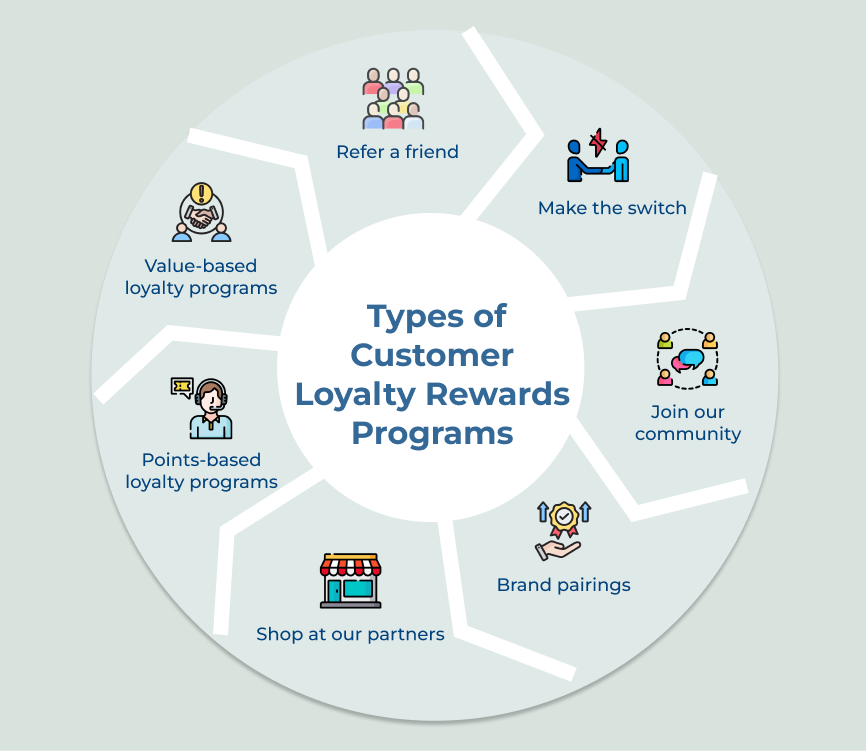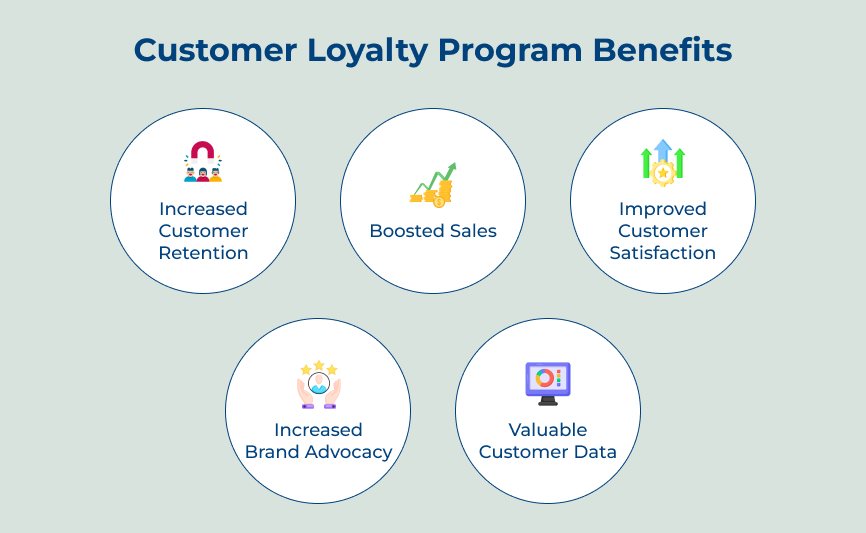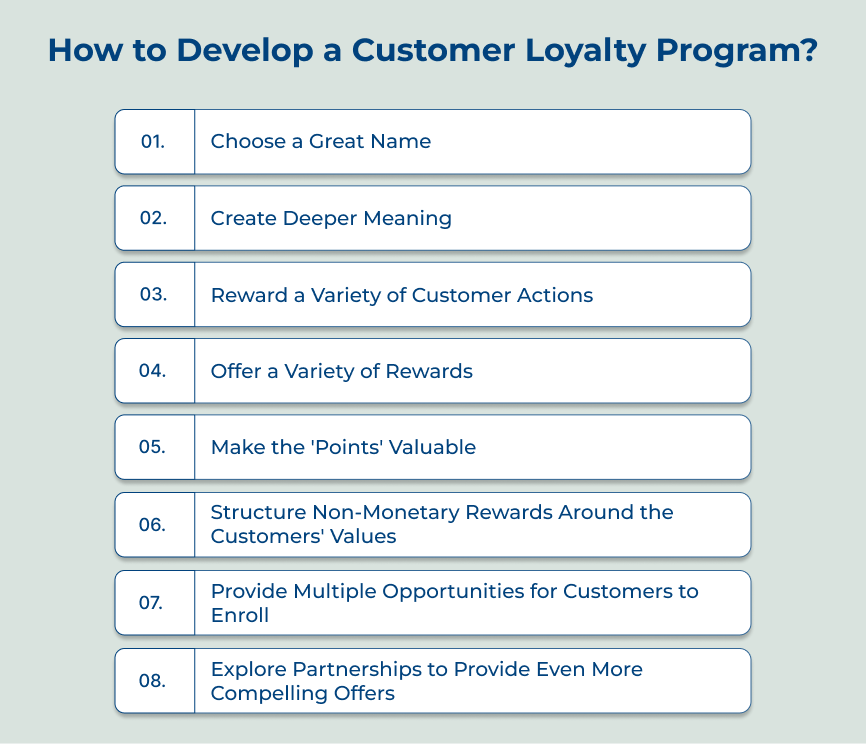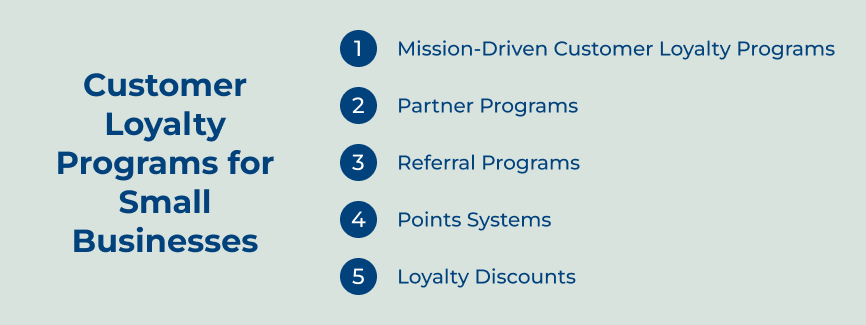1. Choose a Great Name
The first step is to choose a great name for the program that resonates with the brand and targets the audience. A catchy name can help create excitement and intrigue around the program, making it more memorable for customers. Choosing a great name, can establish a strong brand identity for the loyalty program and differentiate it from the competitors.
A well-chosen name can also help set the tone for the program, conveying the benefits and rewards that customers can expect to receive. Let’s assume, a coffee shop might name their loyalty program “Perks & Beans,” highlighting the perks customers can earn and the main product offered by the business.
Best practice:
- Keep it simple and easy to remember.
- Make it relevant to the brand or industry.
- Consider the emotions and reactions the business wants to evoke in customers when they hear the name.
2. Create Deeper Meaning
Creating deeper meaning is an essential step in developing a customer membership program. Creating a strong emotional bond can enhance lasting brand loyalty beyond mere products. Craft a narrative that connects with the audience, matches brand values and delivers impactful experiences.
Create deeper meaning to your businesses to build a strong sense of trust and loyalty with their customers. Let’s consider, a coffee shop could create a loyalty program centered around sustainability and community involvement. It can resonate with environmentally conscious customers and those who value supporting local businesses. The deeper connection can lead to repeat business and positive word-of-mouth referrals.
Best practice:
- Align the brand values with those of the target audience.
- Create experiences that evoke emotion and leave a lasting impact.
- Tell a compelling story that resonates with the customers and showcases the unique aspects of the brand.
3. Reward a Variety of Customer Actions
Businesses must reward a variety of customer actions to create a successful customer loyalty program. It can include not only purchases but also actions such as referrals, social media engagement and feedback. The step helps to create a customer loyalty rewards program by increasing customer engagement and loyalty.
Rewarding customers for a variety of actions can encourage them to interact with the brand on multiple levels. It can help strengthen their connection to the brand and increase their likelihood of remaining loyal customers. Let’s consider a clothing retailer that may reward customers for purchases, friend referrals, social media sharing and shopping feedback.
Best practice:
- Think beyond discounts and coupons to come up with unique rewards that will incentivize customers to take action.
- Make it easy for customers to participate. Ensure that the rewards program is user-friendly and accessible across multiple platforms.
- Monitor and analyze customer actions to see which rewards are most effective in driving customer loyalty and adjust the program accordingly.
4. Offer a Variety of Rewards
Offering a variety of rewards is a crucial step in developing a successful customer membership program. Businesses can cater to different preferences and incentivize repeat purchases by providing customers with a range of rewards to choose from. It helps create a loyalty program by increasing engagement and satisfaction among customers.
A coffee shop can offer rewards such as free drinks, discounts on pastries, or exclusive access to new menu items. Providing a variety of rewards can appeal to different preferences and motivate customers to return regularly.
Best practice:
- Conduct customer surveys to identify preferred reward options.
- Rotate rewards periodically to keep customers excited and engaged.
- Personalize rewards based on customer preferences to increase relevance and effectiveness.
5. Make the ‘Points’ Valuable
Making the ‘points’ valuable is an essential step in developing a successful loyalty program. It focuses on ensuring that the rewards or points customers earn are enticing and valuable to them. Businesses are giving the customers a clear incentive to continue to engage with the brand by making the points valuable
The step can help create a sense of exclusivity and reward for loyal customers, leading to increased customer retention and satisfaction. Let’s assume, that offering rewards such as discounts and exclusive access to events or products, can make the loyalty program more attractive to customers.
Best practice:
- Conduct market research to understand what rewards would be most valuable to the target audience.
- Make sure rewards are achievable and realistic for customers to earn.
- Continuously review and update the loyalty program to keep it exciting for customers.
6. Structure Non-Monetary Rewards Around the Customers’ Values
Structuring non-monetary rewards around the customers’ values is a crucial step in developing a customer loyalty programs. Understanding and aligning the rewards with the customers’ values can create a more engaging loyalty program. Businesses can deepen customer connections through rewards that reflect values like sustainability, community, or personal growth.
Let’s consider, businesses could incentivize sustainability-minded customers with discounts on eco-friendly products or donation options for charities with each purchase. It shows that the business share their values and are committed to making a positive impact on the world.
Best practice:
- Conduct surveys or focus groups to understand the customers’ values and preferences
- Collaborate with non-profit organizations or social causes to offer rewards that align with the customers’ values
- Regularly communicate with the customers to gather feedback and ensure that the rewards continue to resonate with them.
7. Provide Multiple Opportunities for Customers to Enroll
The approach involves ensuring customers have multiple easy sign-up options like in-store, online, or on a mobile app for the program. The step helps create a customer loyalty program by removing any barriers to entry. When customers can enroll easily, they are more likely to join and start earning rewards.
Let’s assume, a coffee shop can provide enrollment forms at the register, on their website and through a loyalty app. Customers can sign up anywhere they are comfortable, increasing participation and encouraging repeat purchases.
Best practice:
- Utilize multiple channels, such as social media, email and in-person interactions, to promote enrollment opportunities.
- Offer incentives for signing up, like a welcome discount or bonus points, to encourage immediate enrollment.
- Make the enrollment process simple and user-friendly to ensure a seamless experience for customers.
8. Explore Partnerships to Provide Even More Compelling Offers
Businesses must explore partnerships to provide even more compelling offers to customers when developing a customer membership program. Collaborating with other businesses can create unique and valuable rewards that will entice customers to continue engaging with the brand. Partnerships enhance loyalty program value by offering customers more benefits and experiences.
Let’s consider, that a clothing retailer could partner with a local gym to offer customers a discount on workout apparel when they sign up for a gym membership. It not only benefits both businesses but also provides customers with additional incentives to engage with the loyalty program.
Best practice:
- Identify businesses or organizations that share a similar target audience or values to ensure a mutually beneficial partnership.
- Negotiate clear terms and expectations with partners to ensure a successful collaboration.
- Continuously evaluate partnerships based on customer feedback and engagement metrics to optimize the effectiveness of the loyalty program.
Customer Loyalty Programs for Small Businesses
Below are the innovative and practical customer loyalty program strategies tailored specifically for small businesses, ensuring you can create deeper relationships with your customers.















